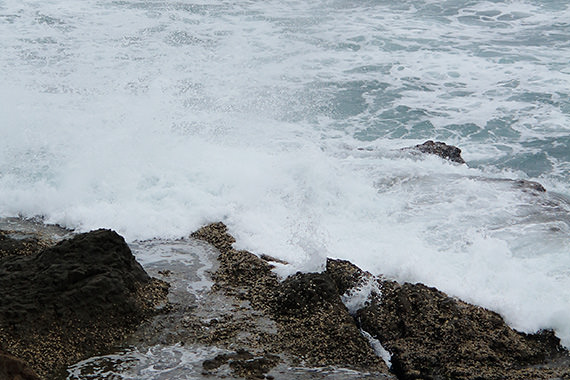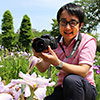[Lesson 2] Adjusting Shutter Speed for a More Dynamic Effect
In the second article of the series, we will talk about shutter speed. By learning the ways to make use of both slow and fast shutter speeds, you will be able to express the movement of the subject more freely, and your photographic experience will also be more enjoyable. (Report by: Yutaka Tanekiyo)

Pages: 1 2
Creating light trails of moving cars with a slow shutter speed
While you might not be too concerned about the shutter speed when photographing under normal circumstances, using a slow or a fast shutter speed can in fact help to create fantastical effects as if time was flowing at a slower pace, or produce dynamic shots that capture a fleeting moment of the subject. To set the shutter speed manually, align the mode dial with [TV] (Shutter-priority AE mode), and you can adjust the shutter speed by turning the main dial (In the case of EOS DSLR cameras. For the EOS M3, adjust using the dial around the shutter button). In the following, let's start by taking on the challenge of capturing light trails of cars with a slow shutter speed.
1. Aim at a passing car from an overhead bridge
1/2 sec

Choose a timing when there is traffic flow, and aim your camera from an overhead bridge. Here, I disabled the camera flash, and took this shot with the shutter speed set to 1/2 second. Although motion blur is observed in cars that are travelling at a fast speed, this shutter speed setting is not slow enough to create light streaks in the vehicles that passed by.
2. Slow down the shutter speed further and take a shot
1 sec

At 1 second, the shape of the moving cars can no longer be recognised, and light streaks have become more noticeable. However, the length of the light trails remains short at this shutter speed. Next, let's try to photograph at a speed of 10 seconds.
3. Done! Long light trails as intended
10 sec

With the shutter speed set to 10 seconds, long light trails are created as intended, adding a dynamic touch to the photo.
[Tips] Beware of camera shake in long-exposure shots!
- Use a tripod wherever possible
- Find a place to secure the camera if a tripod cannot be used

Camera shake is likely to occur when you take shots at a slow shutter speed, so you need to ensure that the camera is firmly secured. The best way is to make use of a tripod, but if the surrounding environment does not allow you to do so, secure the camera such as by placing it on a railing.

The photo would turn out blurry if you take a handheld shot at a slow shutter speed.
Freezing the subject with a fast shutter speed
In order to capture a fast-moving subject without causing it to turn out blurry, you need to adjust the shutter speed according to the speed at which the subject is travelling. Below are some examples of shots taken at fast shutter speeds that can be used as a reference.
1/250 sec

Speed boat hurtling across the bay
A shot taken at a shutter speed of 1/250 second. Here, I froze the movement of the speed boat intentionally, and expressed the speed at which it was travelling using the long wake that it created.
1/500 sec

Waves splashing on the rocks
If you want to capture splashing waves, use a shutter speed that is 1/500 second or faster. Doing so allows you to express the splashes in detail.
1/1600 sec

Airplane just before landing
An airplane that flew over my head. At a shutter speed of 1/1600 second, you can freeze the movement of the aircraft completely.

Born in 1982 in Osaka. After graduating from the Faculty of Foreign Studies at Kyoto Sangyo University as a German language major, Tanekiyo worked as an assistant to Toshinobu Takeuchi, after which he became an independent photographer.

A monthly magazine that believes that enjoyment of photography will increase the more one learns about camera functions. It delivers news on the latest cameras and features and regularly introduces various photography techniques.
Published by Impress Corporation

































